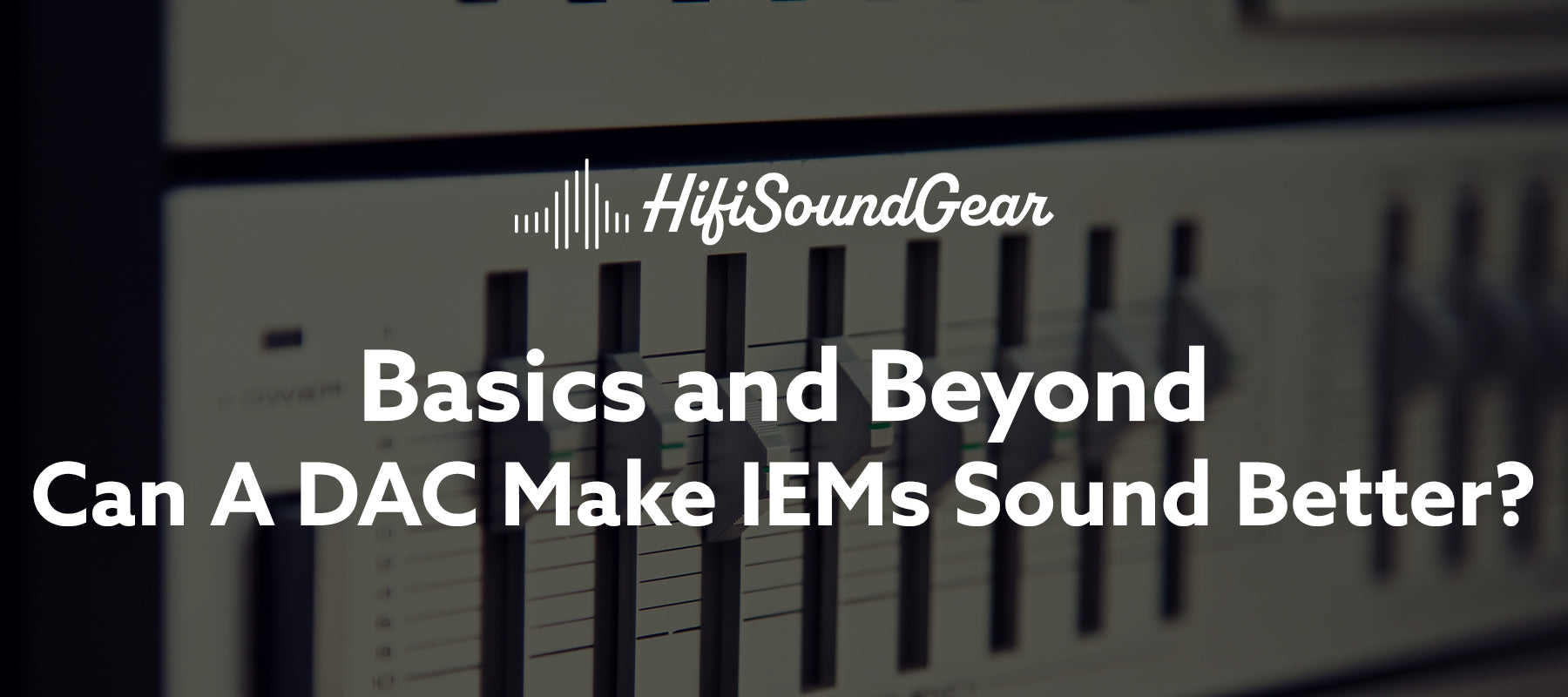
Can A DAC Make IEMs Sound Better?
Let me paint you a familiar scene: You've just invested in a shiny new pair of IEMs that cost more than your first car, only to plug them into your smartphone and think, "Is this it?" Don't worry – you're not alone.
Many audio enthusiasts aren't experiencing their IEMs' full potential due to suboptimal source equipment. Let's dive into the wonderful world of DACs and find out if they're the missing ingredient in your audio recipe for success.
Understanding DACs and IEMs: A Match Made in Audio Heaven?

First things first – let's decode what we're dealing with here.
A DAC (Digital-to-Analog Converter) is essentially your music's translator, turning those ones and zeros into the sweet analog waves your ears crave. Think of it as an interpreter who needs to be fluent in both digital and analog languages – the better the interpreter, the more nuanced the translation.
IEMs (In-Ear Monitors) are particularly finicky about their source equipment because they're like high-performance sports cars – give them premium fuel (clean audio signal), and they'll perform magnificently. Feed them regular gas (poor quality source), and you'll never experience their true potential. The key here lies in their sensitivity and impedance characteristics.
The Technical Benefits: More Than Just Marketing Hype
When you add a quality DAC to your IEM setup, several magical things happen. The signal-to-noise ratio (SNR) typically improves dramatically, which means you'll hear more music and less of that annoying background hiss that's been masking your favorite guitar solos. It's like cleaning a dusty pair of glasses – suddenly, everything comes into crystal-clear focus.
Voltage regulation in dedicated DACs is generally superior to what you'll find in your smartphone or laptop. This means more consistent power delivery to your IEMs, resulting in punchier bass, more dynamic contrasts, and better overall control. Think of it as giving your IEMs a steady supply of premium coffee instead of random gas station cups throughout the day.
When DACs Save the Day

Here's where things get interesting. A good DAC can effectively address several common IEM issues:
- Background Hiss: That annoying white noise that's especially noticeable during quiet passages? A quality DAC can reduce or eliminate it entirely through better circuit design and power isolation.
- Output Impedance Matching: Many built-in sources have wildly inappropriate output impedance for sensitive IEMs. A dedicated DAC with low output impedance (typically <1 ohm) ensures your IEMs perform exactly as intended.
- Digital Artifacts: Those occasional glitches and harsh edges in your music? A good DAC's superior processing and clock management can smooth these out like a digital audio iron.
When You Might Not Need a DAC
Let's be real here – not everyone needs a separate DAC. If you're rocking a recent flagship smartphone or a high-end digital audio player (DAP), you might already have excellent digital-to-analog conversion at your disposal. Modern Apple and Samsung devices, for instance, pack surprisingly capable audio hardware.
The law of diminishing returns kicks in hard in the audio world. If you're using entry-level IEMs (sub-$100), the improvement from adding a dedicated DAC might be subtle at best. Your money might be better spent on better IEMs first.
Choosing Your Perfect DAC Partner

If you've decided to take the plunge, here's how to choose wisely:
For portable use, consider these factors:
- Size and form factor (nobody wants to carry a brick)
- Battery life (if applicable)
- Compatibility with your source device
- Output power matching your IEMs' requirements
Popular features to look for:
- Balanced outputs (if your IEMs support it)
- Native DSD support (for you high-res audio enthusiasts)
- Multiple digital filters (for sound customization)
- MQA decoding (if you're a Tidal user)
The Final Mix
So, can a DAC make your IEMs sound better? The answer is a qualified yes – but it depends on your current setup, your IEMs, and your listening preferences. If you're already using high-end IEMs with a basic source, a good DAC could be the upgrade that makes you fall in love with your music all over again.
Think of it this way: Your audio chain is only as strong as its weakest link. If that weak link is your source, a DAC could be the reinforcement you need. Just remember – no DAC in the world can make bad recordings sound good or transform budget IEMs into summit-fi territory. It's about optimizing what you already have and removing obstacles between you and your music.
Ready to elevate your listening experience? Start by assessing your current setup, identify any issues you're experiencing, and then consider if a DAC might be the solution you've been searching for. Your ears (and your favorite albums) will thank you!
Elevate Your Listening Experience With These Related Articles
Enjoyed this article? Feel free to check out these related topics!

